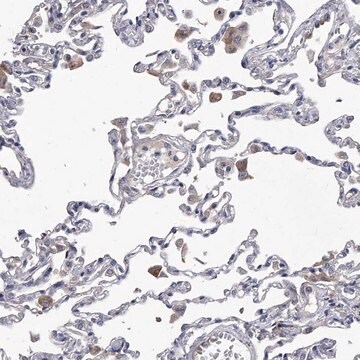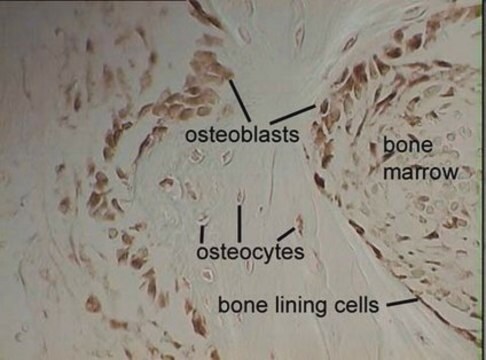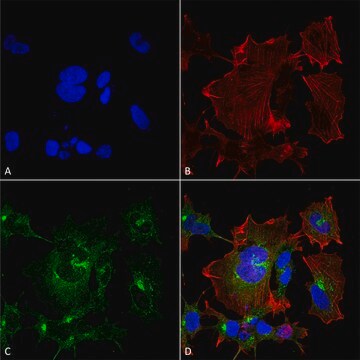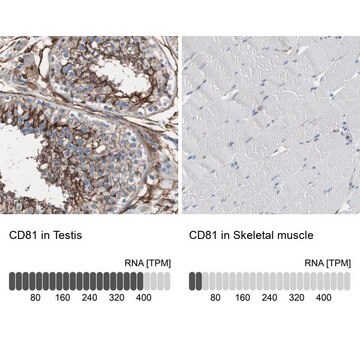General description
Medium-wave-sensitive opsin 1/Long-wave-sensitive opsin 1 (UniProts: P04001; P04000; also known as Green cone photoreceptor pigment, Green-sensitive opsin, GOP/ Red cone photoreceptor pigment, Red-sensitive opsin, ROP) are encoded by the OPN1MW (also known as GCP)/OPN1LW (also known as RCP) genes in human. The full range of color discrimination in humans is based on the presence and function of three cone photoreceptors. Each cone type possesses a photo-sensitive pigment-protein complex consisting of 11-cis retinal and a unique opsin protein that gives sensitivity in the short (S cone, peak sensitivity about 420 nm), middle (M cone, peak sensitivity about 530 nm with polymorphism), and long (L cone, peak sensitivity about 560 nm with polymorphism) wavelengths of the light spectrum. Opsins are multi-pass membrane proteins that belongs to the G-protein coupled receptor 1 family. They consist of four extracellular, 7 helical, and four cytoplasmic domains. Genes for the three types of cone opsins and the rod photoreceptor rhodopsin gene seem to be homologous with varying amounts of conservation. Strongest conservation is between the middle (green) and long (red) wavelength sensitive pigments on the X chromosome, suggesting a relatively recent duplication/divergence event. The S cone (blue) opsin seems to have a stronger conservation with rhodopsin. Cone photoreceptor distribution in humans is dominated by the M and L cone pigments. Mutations in OPN1MW and OPN1LW genes are known to cause color blindness that is characterized by a dichromasy in which red and green are confused, without loss of luminance or shift or shortening of the spectrum. Some mutations also lead to cone dystrophy leading to progressive degeneration of the cone photoreceptor with some preservation of rod function. (Ref.: Neitz, M., and Neitz, J. (2000). Arch. Ophthalmol. 118(5); 691-700).
Specificity
Clone 7G8 specifically detects human green/red opsin.
Immunogen
Full-length purified green/red human opsin.
Application
Anti-Green Red Cone Opsin, clone 7G8, Cat. No. MABN2492, is a highly specific mouse monoclonal antibody that targets Medium-wave-sensitive opsin 1 and Long-wave-sensitive opsin 1 and has been tested for use in Immunohistochemistry (Paraffin).
Research Category
Neuroscience
Quality
Evaluated by Immunohistochemistry (Paraffin) in human retina tissue sections.
Immunohistochemistry (Paraffin) Analysis: A 1:250 dilution of this antibody detected Green/Red Cone Opsin in human retina tissue sections.
Target description
40.58 kDa calculated.
Physical form
Format: Purified
Protein G purified
Purified mouse monoclonal antibody IgG1 in buffer containing 0.1 M Tris-Glycine (pH 7.4), 150 mM NaCl with 0.05% sodium azide.
Storage and Stability
Stable for 1 year at 2-8°C from date of receipt.
Other Notes
Concentration: Please refer to lot specific datasheet.
Disclaimer
Unless otherwise stated in our catalog or other company documentation accompanying the product(s), our products are intended for research use only and are not to be used for any other purpose, which includes but is not limited to, unauthorized commercial uses, in vitro diagnostic uses, ex vivo or in vivo therapeutic uses or any type of consumption or application to humans or animals.








